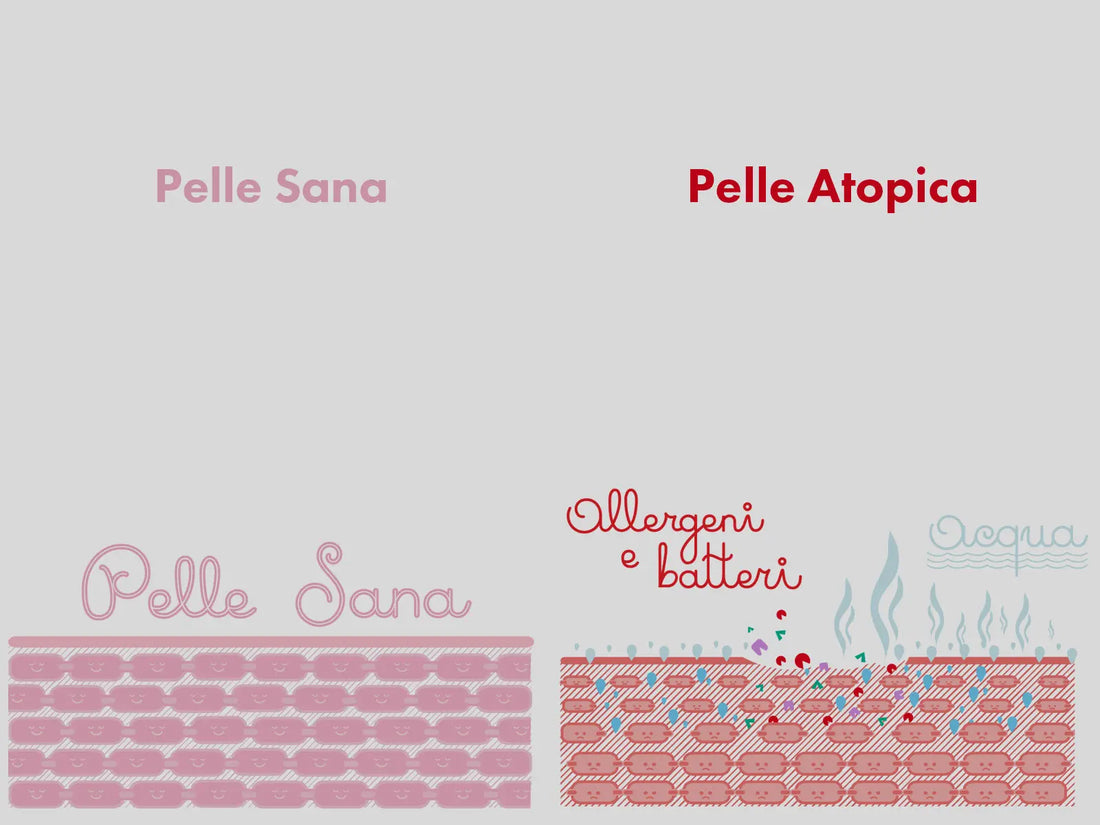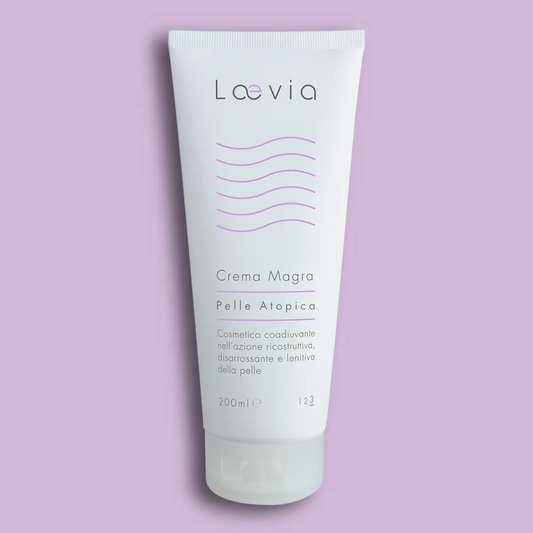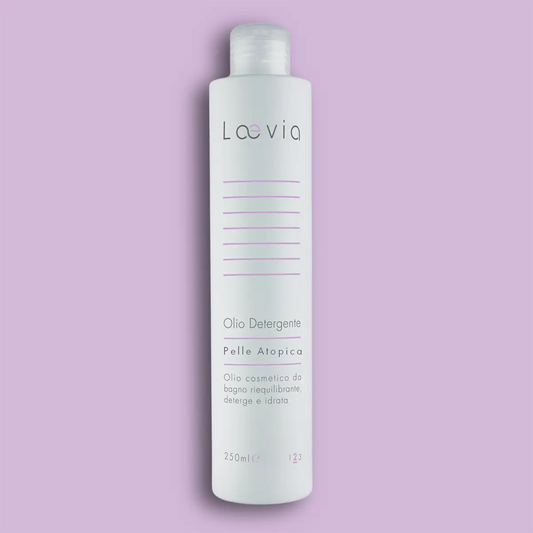To keep allergies and the itching typical of atopic dermatitis at bay, you need to hydrate your skin. Cleanse it. Protect her. Here are the three phases of the Laevia journey. Atopic skin should be treated as an extremely delicate and precious object. Laevia knows how to take care of it.
Healthy skin versus atopic skin
Healthy skin contains within it a certain quantity of fats (Ceramides) which hold its cells together and allow it to carry out its precious task, which is to retain water and mineral salts so as to prevent the entry of external agents such as fungi, bacteria and allergens.
Skin affected by atopic dermatitis has much less fat than healthy skin and, for this reason, has a reduced protective effect, it is drier because it retains less water and allows harmful agents and allergens to penetrate more easily.
Damaged skin shield, lurking allergy
To increase the effectiveness of the skin barrier and avoid the risk of allergies, those suffering from atopic dermatitis should keep their skin hydrated as much as possible. The advice is not far-fetched: in fact, it is estimated that people with a damaged skin barrier have a 3 to 6 times greater risk of becoming allergic than others!
And what about that crazy itch…
Yes, the itching: annoying, uncontainable, which takes away sleep and good mood. Those who suffer from atopic dermatitis know this discomfort well and periodically experience the unstoppable urge to scratch knowing that, in the end, the relief will only be apparent and short-lived. Again, hydration is the winning move. There are specific drugs, of course, but without a multi-pronged attack we won't get far. To soothe itching, you need to keep your skin hydrated.
Without hydration you're in trouble. So go ahead for specific treatments!
Without deep hydration, atopic skin rebels, dries out and becomes full of spots on the face, trunk, behind the ears, on the scalp, on the folds of the legs and arms, on the backs of the hands and feet. A sign that we need to take action with a beneficial yet pleasant routine that allows us to:
Phase 1 • Replenish the mineral salts that the damaged barrier was unable to retain
Step 2 • Cleanse gently
Phase 3 • Repair the skin by relieving the itching sensation and redness
A practice, that of hydration, which must be done daily
Regularity is the key factor in managing skin with atopic dermatitis. Treatment with delicate cleansers and specific emollient creams must also be followed during periods of remission, because the skin remains fragile, exposed to irritating factors and at risk of flaking and cracking. In this way, it will be possible to prolong the period of well-being between one exacerbation and another. Password: consistency.

Phase 1: hydration begins by immersing yourself in water and bath salts
Bathing is an important moment for atopic skin and hydration begins right here. It cannot last too long, 10 or 15 minutes two or three times a week are enough, and the water should be enriched with Laevia Bath Salts, rich in Magnesium Chloride, Sodium Chloride, Allantoin and Urea: they have a hydrating effect and help the release of toxins from the skin. Thus the skin is remineralised and purified.
The ideal water temperature? Between 32° and 34°. Too much heat would in fact increase dryness and reignite inflammation.
Phase 2: hydration continues by delicately cleansing
Atopic skin should be washed gently, with Laevia Shower Gel or Cleansing Oil: they allow you to eliminate irritants, bacteria and allergens without weakening the hydrolipidic film that protects the skin.
Glove or sponge? Neither because they could irritate the skin. Bare hands are much better as they are much more delicate and clean.
And after getting out of the water? You need to dry yourself well without rubbing your skin, but dab it gently.
Phase 3: hydration ends with cream and massage
Atopic skin is thirsty, and Laevia emollient and soothing cream is its source of hydration. Rich in Ceramide3, Hyaluronic Acid, Vitamin E, Vegetable Glycerin, Panthenol, Glycyrrhetinic Acid, Bisabolol and Grape Seed Oil, it should be sprinkled all over the body and especially in critical areas to restore the barrier effect of the skin and at the same time calm redness and itching. The cream, especially in children, has a relaxing effect on the skin.
Which cream to use? The fast-absorbing Laevia Lean Cream for Atopic Dermatitis is indicated for hot periods. Laevia Fat Cream for Atopic Dermatitis, richer and more nourishing, is indicated for cold periods.
How much cream to use? To know the right dose to apply, you can refer to the "trick" of the Finger Tip Unit: to cover a surface as large as the palm of a hand, apply the amount of cream that can fit on the first phalanx of the index finger of the palm of the hand. hand.
How to apply the cream? Softly, that is, with the fingertips, within a few minutes of finishing the bath, repeating the creaming even two or three times a day.





